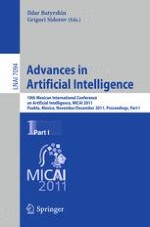The two-volume set LNAI 7094 and LNAI 7095 constitutes the refereed proceedings of the 10th Mexican International Conference on Artificial Intelligence, MICAI 2011, held in Puebla, Mexico, in November/December 2011. The 96 revised papers presented were carefully reviewed and selected from numerous submissions. The first volume includes 50 papers representing the current main topics of interest for the AI community and their applications. The papers are organized in the following topical sections: automated reasoning and multi-agent systems; problem solving and machine learning; natural language processing; robotics, planning and scheduling; and medical applications of artificial intelligence.
